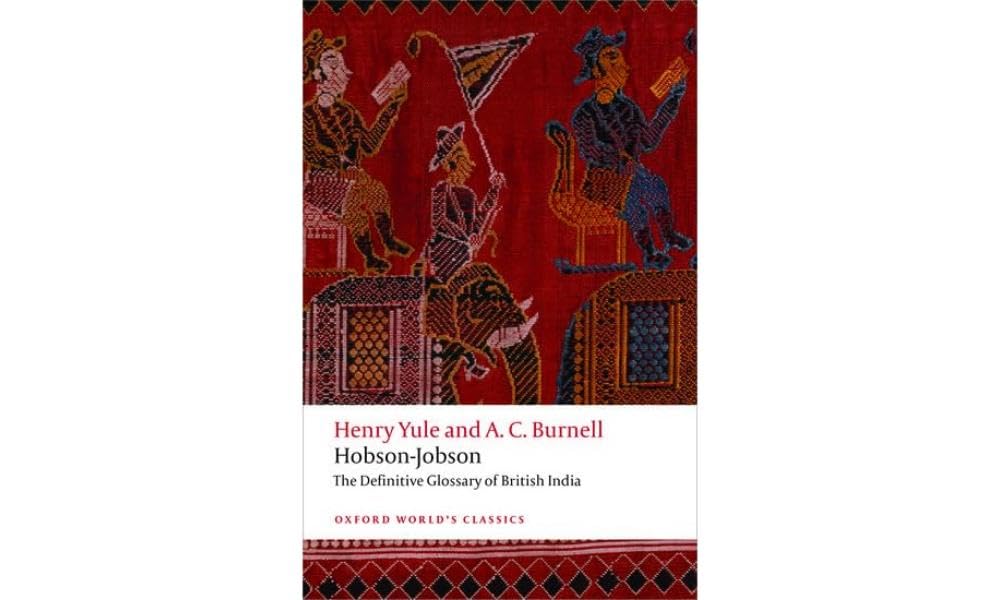


Full description not available


D**E
An Amazing Documentary of India, the British Empire, and Their Interwoven Languages
I'm a fan of words, especially their origins and changing uses and definitions. Yule and Burnell (with modern editing by Teltscher) did an amazing job of compiling words, phrases and uses of the same, at a time when even telegraph communications could be hard. Often a bit chaotic in approach, this volume still documents the collision of cultures through the murky window of language.Without this volume, delightful additions to our colorful speech and writing would likely be much poorer, including the use of the term "Hobson-Jobson" itself.I especially enjoyed the early material, including epigrams from the most abtruse references and ancient sources. The Prefaces provide historical insight as well.If you ever wanted to know where words as diverse as gingham, calico, cheroot, toddy and shawl came from (and thousands more), you simply can't pass this volume up on your way to enlightenment.
A**Y
keep this with you while you have a chota peg before bashing off to Mrs.Sangupta
Very useful companion when reading books about the British Raj such as The Raj Quartet.
P**O
fascinating hand book to our English language
a revelation how much of common English is composed of words of Central and South Asian origin and continues to be in modern culture; an often over looked legacy of British imperialism; there is no parallel impact in America's imperial legacy in Philippines, or even Hawaii on our language
Z**Z
A fascinating dictionary
Very interesting for those who like to know the origin of words.
A**R
Five Stars
Beautiful history and descriptions are detailed. Great glimpse into the British Raj's world.
W**Y
Very small print
This is entertaining but get out your magnifying glass.
S**N
For anyone interested in British India should have a copy
This is a great resource book that gives the etymology of `loanwords' that come from the Indian subcontinent into the English from the nineteenth century. These are every day words that are in usage today; such as chit, khaki, bottle, bandana, cot, doolally and the list goes on. Words listed so far are from Hindi and Urdu as varieties of Hindustani. The history of the usage is also really fascinating. This is book then is not only good for referencing and historical content, but also fun in which `sample' at your pleasure. The British in turn have change the way that many Indian people communicate in India, as regional languages compete with `Hindi' as a national language -`English' the may medium of communication in the Civil service as well as the middle class of the country.Published from the days of British and re-published many times there after its latest incarnation has a new preface introduction by the publisher. The preface examines and illuminates unfamiliar factual information about the authors. The current editor shortens the original publication and delivers some useful notes on the colonial context in which it was originally set. Translations are given where necessary for certain quotes. The editor also notes that the rather terrible and tragic trade in and subsequent opium wars are missing as entries in this publication, a rather telling statement.Dare I say `we' have given them, among other words, in turn the `important' word for Indian cuisine the word `Curry' - oh what have we done?Ultimately this is both a fun and interesting read.
Trustpilot
2 weeks ago
5 days ago